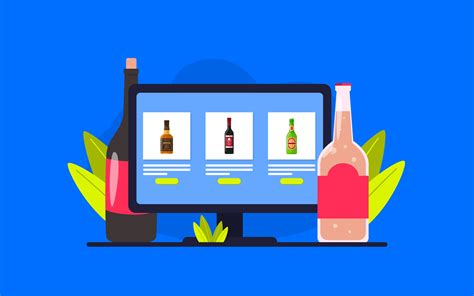How To Start An Alcohol Brand
Ronan Farrow
Apr 02, 2025 · 4 min read

Table of Contents
How to Start an Alcohol Brand: A Comprehensive Guide
Starting an alcohol brand is a challenging but potentially rewarding venture. It requires a blend of creativity, business acumen, and a deep understanding of the alcohol industry. This guide will walk you through the key steps, offering insights to help you navigate this exciting journey.
1. Develop Your Brand Identity and Concept
Before you even think about distilling or brewing, you need a solid brand foundation. This includes:
A. Defining Your Niche:
- What type of alcohol will you produce? Will it be whiskey, gin, vodka, tequila, wine, beer, or something more unique? Consider current market trends and identify gaps. Are there any underserved niches you could target?
- What is your brand's personality? Will it be luxurious, craft, budget-friendly, sustainable, or something else entirely? Your brand personality should be consistent across all aspects of your marketing and product presentation.
- Who is your target audience? Understanding your ideal customer will inform your marketing strategy and product development. Consider their demographics, lifestyle, and drinking preferences.
B. Crafting Your Brand Story:
A compelling brand story resonates with consumers and creates emotional connections. What makes your brand unique? What's the history behind it? What are your values? A strong narrative will set you apart from the competition.
C. Choosing a Name and Design:
Your brand name should be memorable, easy to pronounce, and relevant to your product. Your logo and packaging design should reflect your brand personality and appeal to your target audience. Ensure your branding is legally compliant and doesn't infringe on existing trademarks.
2. Secure Funding and Legal Requirements
Starting an alcohol brand requires significant investment. Explore various funding options:
A. Funding Sources:
- Personal Savings: This is often the initial source of funding.
- Loans: Secure loans from banks or credit unions. Be prepared to present a solid business plan.
- Investors: Seek angel investors or venture capitalists. This often requires a compelling pitch deck and strong financial projections.
B. Legal and Regulatory Compliance:
The alcohol industry is heavily regulated. You'll need to:
- Obtain the necessary licenses and permits: These vary by location and the type of alcohol you're producing. Research your local and state regulations thoroughly.
- Comply with labeling requirements: Alcohol labels must adhere to strict guidelines regarding ingredient lists, alcohol content, and health warnings.
- Understand tax implications: Alcohol production and sales are subject to various taxes and duties.
3. Production and Sourcing
Once you have your brand identity and funding secured, you can focus on production:
A. Production Methods:
- Contract Manufacturing: This is a cost-effective option for startups. You'll partner with an existing distillery or brewery to produce your alcohol.
- In-House Production: This offers more control but requires significant investment in equipment and facilities. Carefully weigh the pros and cons based on your resources and goals.
B. Sourcing Ingredients:
The quality of your ingredients directly impacts the quality of your product. Source high-quality ingredients from reputable suppliers. For example, using organic or locally sourced ingredients can be a strong selling point.
4. Marketing and Sales
Getting your alcohol into the hands of consumers requires a well-defined marketing and sales strategy:
A. Marketing Channels:
- Social Media Marketing: Utilize platforms like Instagram, Facebook, and TikTok to connect with your target audience.
- Content Marketing: Create engaging content, such as blog posts, recipes, and videos, to showcase your brand and product.
- Public Relations: Reach out to media outlets and influencers to generate buzz around your brand.
- Distribution: Establish relationships with distributors to get your alcohol into stores and bars.
B. Sales Strategies:
- Direct-to-consumer sales: Sell your alcohol directly to consumers through your website or at events.
- Wholesale distribution: Partner with distributors to reach a wider audience.
- On-premise sales: Work with bars and restaurants to feature your alcohol on their menus.
5. Continuous Improvement and Adaptation
The alcohol industry is dynamic. Regularly evaluate your brand performance, gather customer feedback, and adapt your strategy to stay competitive. Continuously innovate and seek ways to improve your product and brand.
Starting an alcohol brand requires dedication, perseverance, and a well-crafted plan. By following these steps and staying informed about industry trends, you can increase your chances of success. Remember to always prioritize legal compliance and responsible alcohol consumption.
Featured Posts
Also read the following articles
| Article Title | Date |
|---|---|
| How To Save A Dying Tree From Lack Of Water | Apr 02, 2025 |
| How To Read Books From Hoopla On Kindle | Apr 02, 2025 |
| How To Roast Hatch Chile Peppers In The Oven | Apr 02, 2025 |
| How To Replace Pontoon Carpet | Apr 02, 2025 |
| How To Reduce Tds In Pool Water | Apr 02, 2025 |
Latest Posts
-
How Big Is Rt 44 At Sonic
Apr 03, 2025
-
How Big Is North Korea Compared To Texas
Apr 03, 2025
-
How Big Is Nine Inch
Apr 03, 2025
-
How Big Is Lost Lands
Apr 03, 2025
-
How Big Is Lake Sunapee
Apr 03, 2025
Thank you for visiting our website which covers about How To Start An Alcohol Brand . We hope the information provided has been useful to you. Feel free to contact us if you have any questions or need further assistance. See you next time and don't miss to bookmark.
